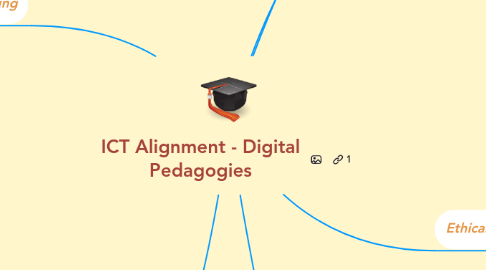
1. Intercultural Understanding
1.1. Google Translate - Look at various languages and phrases. What they sound like, how the language looks, what other alphabets look like around the world and our own indigenous people.
1.2. Join the Google Translate Community as a class for languages
1.3. Collaboration software used to communicate ideas with a school in another country or within Australia such as a rural school linked with indigenous influence
1.3.1. Whiteboard - Collaborative Drawing App - for smartphones and tablets
1.3.2. Wordpress
1.3.3. MS OneNote
2. Personal and Social Capability
2.1. Stories, literature, cooperative games, role plays, problems solving
2.1.1. Friendly Schools website - How can teachers bring social and emotional learning into the classroom?
2.1.2. The Friendly Schools Plus Student Cyber Leader resources are designed to skill young people to become leaders in their school to reduce cyberbullying and other cyber-related harms.
2.1.3. Interactive and engaging learning activities
2.1.4. Build social and emotional competencies in students
3. Mark Menegon ICT Alignment to Pedagogy
4. Critical and Creative Thinking
4.1. Questacon - National Science and Technology Centre
4.1.1. Questacon Virtual Excursions
4.2. Virtual Field Trips - Discovery Education
4.2.1. Museums
4.2.2. Space Exploration
4.2.3. Art Galleries
5. Literacy and Numeracy
5.1. PLAN - Planning literacy and numeracy software to plan, monitor and record student progress through literacy and numeracy continuums
5.2. Quicksmart Program (Australian Government) - Students are identified as being at-risk of academic failure through their NAPLAN test scores and through teacher knowledge of students’ learning difficulties. The standardised Progressive Achievement Tests (PAT tests) and Cognitive Aptitude Assessment System (OZCAAS) assessments are also used as pre- and post-test measures.
5.2.1. OzCAAS Software - computer-based academic assessment - standardised tests of reading comprehension, vocabulary and mathematics
5.2.2. Games that consolidate recall of number facts or the use of strategies for calculating number facts
5.2.3. BSKB is a leading provider of literacy, numeracy and foundation skills solutions, and last year over 1.2 million individual learners used BKSB to improve their skills.
6. SAMR and Bloom's Taxonomy
7. Ethical Understanding
7.1. Student and Professional Ethics
7.1.1. ACS - Australian Computer Society - Code of Ethics
7.1.2. Some ethical situations are unique
7.1.3. Cyber Ethics and eLearning
7.1.4. Virtual Learning Environments - Fixed and Mobile Devices
7.1.5. Ethics apply to particular professions such as engineers, accountants, lawyers and doctors
7.1.6. Students are also expected to display ethical behaviour

